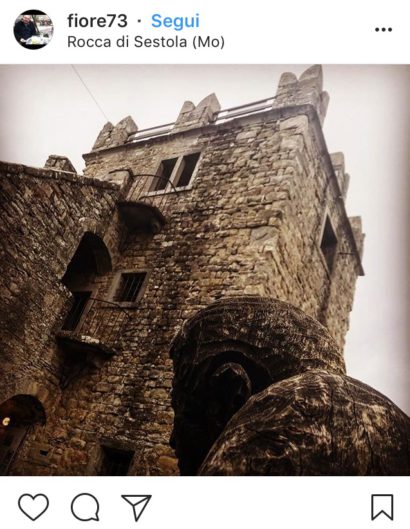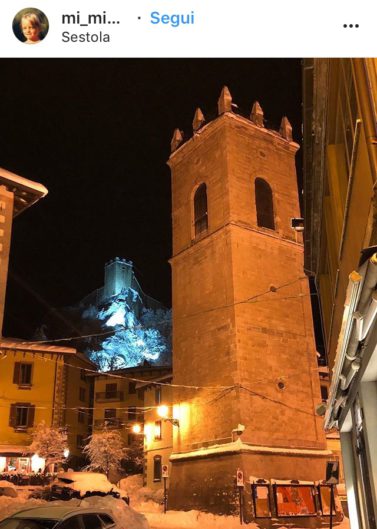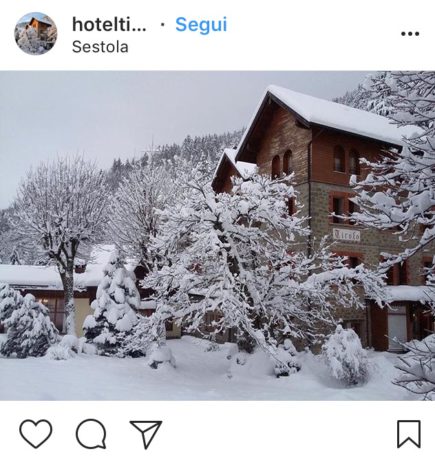Instaborghi: Sestola, Italy, the wonder of the Apennines
«Capital of outdoor sports in all seasons, Sestola conquers you with its simplicity and breath-taking views of the valleys surrounding it»
Welcome to Emilia Romagna, welcome to Sestola Italy (site of the municipality). Also known as Sèstula, in dialect, our last instabgorgo of the winter season (here the previous episodes) dominates the region from the Frignano Park, dominated only by Monte Cimone, close to the Apennine chain that separates Emilia from Tuscany. An unchallenged realm of mountain lovers and of the many humanly practicable outdoor activities, Sestola is the reference point for sport on the Tuscan-Emilian Apennines, but above all it is a village that has a mystic vibe, perched on the marvellous panorama of the valley below.
What to see in Sestola Italy
Sestola rises along a rocky spur and is, therefore, developed vertically. The old part of the village, as you can imagine, is in the highest area, close to the spur. From here, the ancient Fortress dominates the valley: built in the second half of the 16th century, it is located in a strategic place for the control of the area and, therefore, could date even further back in time, also because the name Sestola has Roman origins, so the area could be dated as a place of interest many centuries ago. In the center of the village, the small church of the Madonna del Rosario, with its simple design, flanks the bell tower, of fine workmanship, which marks the slow and pleasant life of the village. Downstream, the Esperia Garden, near the lake of Ninfa, is an ecological-educational oasis of strategic importance for the spontaneous Apennine flora, is managed by the CAI of Modena and you can visit it from May to September.
What to do in Sestola Italy
Sestola is a famous ski resort of the Apennines, which will definitely keep you busy with its 50 km of slopes along Monte Cimone: the slopes are all connected and accessible with the use of a single ski pass. Have you ever tried your hand at paragliding? If the answer is no, consider receiving your baptism of air here. At Pian del Falco, a particularly evocative name meaning “hawk”, you can launch yourself and enjoy the spectacle of the Apennine valley, while screaming in the ears of the poor instructor on duty: it is one of the most beautiful flights of the Apennines and it is not a coincidence that Italian paragliding championships are held here. Monte Cimone is considered one of the Italian meccas for mountain bike lovers: here you will find 375 km of the All Mountain track and 700 km dedicated to the Free Ride, including avant-garde facilities and facilities. We also highly recommended a tour of the area on horseback: the local equestrian center is open all year and affordable for everyone. Sestola also has a Golf Club, on Monte Cimone, in a valley that is fairytale-like, immersed in the fabulous Apennine landscape.
What to eat in Sestola Italy
Despite the high tourist contamination, Sestola has always tried to maintain the historical and cultural characteristics of the place unchanged, as well as the gastronomic ones: typical of the place is the tigella montanara, also known as crescentina, of the Modena Apennines’s bread par excellence. Do not hesitate to consume it with your favourite fillings, especially with pesto. Mushrooms, honey and jam are also typical of the area.
A few curiosities about Sestola, Italy
Like any respected historic village, Sestola also enjoys its legends: the best known is the town of Gadella, where there are two water mills, once operated by the Dogana and Prete torrents. Legend has it that the millers took seven orphaned children to help sift the flour of the mill: one of the millers married a woman who turned out to be a bad stepmother for the children who, in order to escape her wrath, escaped behind a stone in the shape of a shell, which was a fairy’s house. The latter, moved by their tears, began to sift in their place, helping them to get a higher pay and calming the anger of the stepmother. If you place your ear on the famous stone, you can hear the noise of the sieve that the fairy – apparently – continues to use nonstop.
Carolina Attanasio








